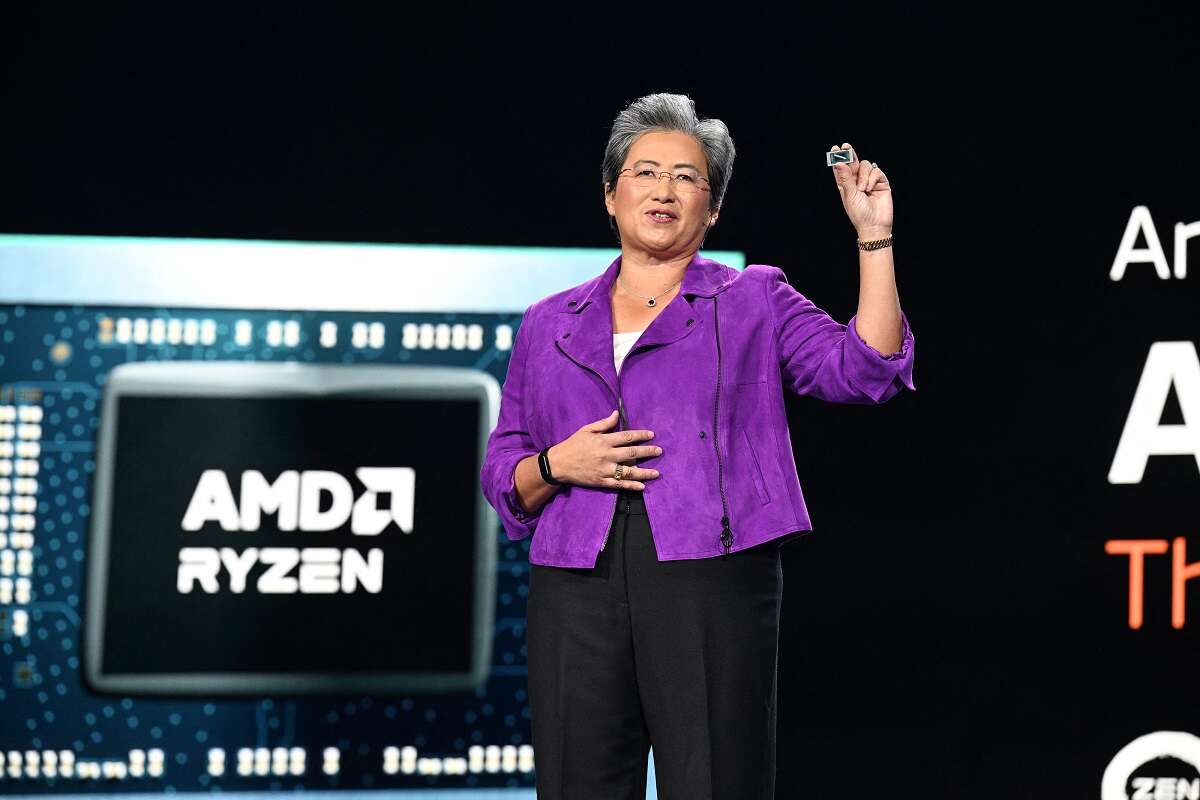
AMD says it will ramp up production of its high-performance AI chip before the end of the year in a bid to challenge Nvidia’s dominance of the market. The company is also eyeing an opportunity to sell more semiconductors to clients in China, despite ongoing and tightening US government sanctions which prevent advanced technologies from being sold in East Asia.

The US chipmaker this week reported second-quarter revenue of $5.35bn, down 18% year-on-year, but it is expecting to bounce back with a stronger finish to the year as its new devices come to the market. Net income was $27m, compared with $447m a year ago.
Slow enterprise spending blamed for AMD’s revenue decline
AMD’s quarterly results, released late on Tuesday, show that revenue from its data centre business unit fell 11%, to $1.3bn. “Enterprise demand was soft and cloud inventory levels were elevated at some customers,” the company said. Its client segment, which covers desktop PCs, experienced a revenue slump of 54%, coming in at $998m, while the company’s gaming business suffered a relatively modest 2% drop in income.
But the company said in an update it is expecting a strong end to the year as it expands its range of AI chips. In June, it revealed its new flagship GPU for AI workloads, the AMD MI300X, which is designed to take on the GPUs sold by Nvidia, which have powered the AI revolution and helped Jensen Huang’s company reap record revenues.
The MI300X features 192GB of HBM3 memory, more than double that of Nvidia’s H100 – the company’s newest AI accelerator (Nvidia does offer an option to link up two H100s, which offers an aggregate 188GB). The size of the GPU’s memory means customers can run an entire large language AI model on a single chip, AMD claims.
CEO Lisa Su told investors that market interest in the MI300 series chips is “very high”. She said the company would work with more “top-tier cloud providers, large enterprises and numerous leading AI companies” in the upcoming quarter.
“Our AI engagements increased by more than seven times in the quarter as multiple customers initiated or expanded programmes supporting future deployments of Instinct accelerators at scale,” Su said. “We made strong progress meeting key hardware and software milestones to address the growing customer pull for our data centre AI solutions and are on track to launch and ramp production of MI300 accelerators in the fourth quarter.”
Though AMD launched the MI300X without a key customer announcement, Amazon’s AWS, the public cloud market leader, was reported at the time to be interested in using the devices in its data centres.
What will AMD do about the US government’s China semiconductor sanctions?
Demand for Nvidia’s chips has been so high that prices have soared and waiting times for shipments can be lengthy, so there may be an opportunity for AMD to capitalise.
Su is also looking to China for revenue growth, despite the US government’s export controls, which have limited the sorts of products that vendors can sell to customers there. The controls are designed to restrict China’s ability to develop and use key technologies such as AI, and in recent weeks Beijing has hit back with sanctions of its own, limiting the export of rare materials used in chipmaking.
Other semiconductor companies such as Nvidia have released pared-down versions of their flagship chips to comply with the export controls, and Su said AMD could do the same. “Our plan is to, of course, be fully compliant with US export controls,” she said on the company’s earnings call. “But we do believe there’s an opportunity to develop products for our customer set in China that is looking for AI solutions, and we’ll continue to work in that direction.”






